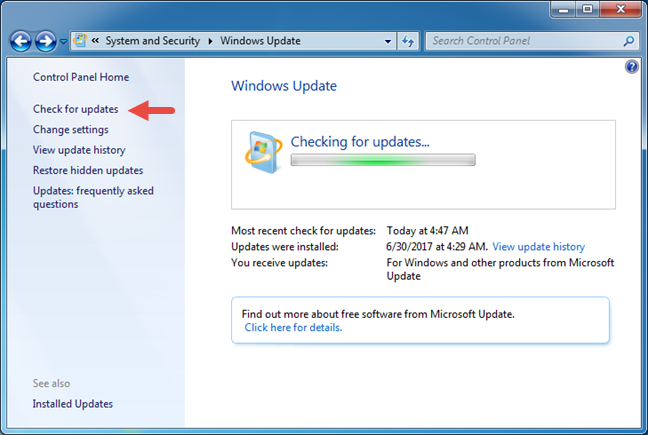
:max_bytes(150000):strip_icc()/how-to-update-internet-explorer-2617983-3240f4ec53874d65848d0b95cf076279.png)
- #FREE INTERNET EXPLORER 11 DOWNLOAD FOR VISTA INSTALL#
- #FREE INTERNET EXPLORER 11 DOWNLOAD FOR VISTA UPGRADE#
- #FREE INTERNET EXPLORER 11 DOWNLOAD FOR VISTA WINDOWS 7#
Max(MessageLimitServerClientAuth, MessageLimitServer) If you set a value between 0x0 and 0x8000, the maximum allowed size of a fragmented message is calculated by using the following formula: Otherwise, the value of the MessageLimitServer registry entry indicates the maximum allowed size of a fragmented message. If you set the value to 0x0 and the value of the MessageLimitServer registry entry to 0x0, fragmented messages are not processed. Registry key: MessageLimitServerClientAuth On a server that uses client authentication If you set a value greater than 0x4000, the maximum allowed size of a fragmented message is 0x4000 bytes. If you set a value between 0x0 and 0x4000, the value indicates the maximum allowed size (in bytes) of a fragmented message.

If you do not create this registry entry, the maximum allowed size of a fragmented message is 0x4000 bytes. On a server that does not use client authentication If you set a value greater than 0x8000, the maximum allowed size of a fragmented message is 0x8000 bytes.


If you set a value between 0x0 and 0x8000, the value indicates the maximum allowed size (in bytes) of a fragmented message. If you set the value to 0x0, fragmented message are not processed. If you do not create this registry entry, the maximum allowed size of a fragmented message is 0x8000 bytes. HKEY_LOCAL_MACHINE\System\CurrentControlSet\Control\SecurityProviders\Schannel\Messaging\ On a client computer To configure how the Microsoft implementation of the TLS/SSL protocol handles fragmented TLS/SSL messages, create the appropriate registry key for you environment under the following registry subkey: For information about newer versions of Windows, see TLS Registry Settings. The following information applies to this update. You can also use these registry keys to prevent the Microsoft implementation of the TLS/SSL protocol from processing fragmented messages.
#FREE INTERNET EXPLORER 11 DOWNLOAD FOR VISTA INSTALL#
This update enables the Windows Vista and Windows Server 2008 Microsoft implementation of the TLS/SSL protocol to successfully parse fragmented messages that are sent by a third-party implementation of the TLS/SSL protocol.Īfter you install the update, you can use registry keys to configure the maximum size of a fragmented message that the Microsoft implementation of the TLS/SSL protocol can parse. I am an unpaid volunteer.The page cannot be displayed. _ Disclaimer: You use my posts entirely at your own risk. Just make sure that you get it from a reputable source. If your problem is simply that IE9 on Vista won't open/display some websites correctly, consider/investigate using a 3rd party web browser such as Firefox on your existing Vista computer. The other thing issue more generally with Windows Vista is that even with just IE9, Microsoft will stop supporting it in 2017. May be the most cost effective solution but that is a bigger decision and I'd suggest you fully investigate the implications first.
#FREE INTERNET EXPLORER 11 DOWNLOAD FOR VISTA UPGRADE#
Given the hardware that you will probably have on an older Vista machine and the Windows upgrade routes available, buying a new Windows 10 (for PC) computer
#FREE INTERNET EXPLORER 11 DOWNLOAD FOR VISTA WINDOWS 7#
To get IE11 is you'll need a computer with Windows 8.1/RT8.1, Windows 7 or Windows 10 (for PCs). You will not be able to install IE11 on Windows Vista. IE9 is the highest version of IE that it is possible to have on Windows Vista.


 0 kommentar(er)
0 kommentar(er)
